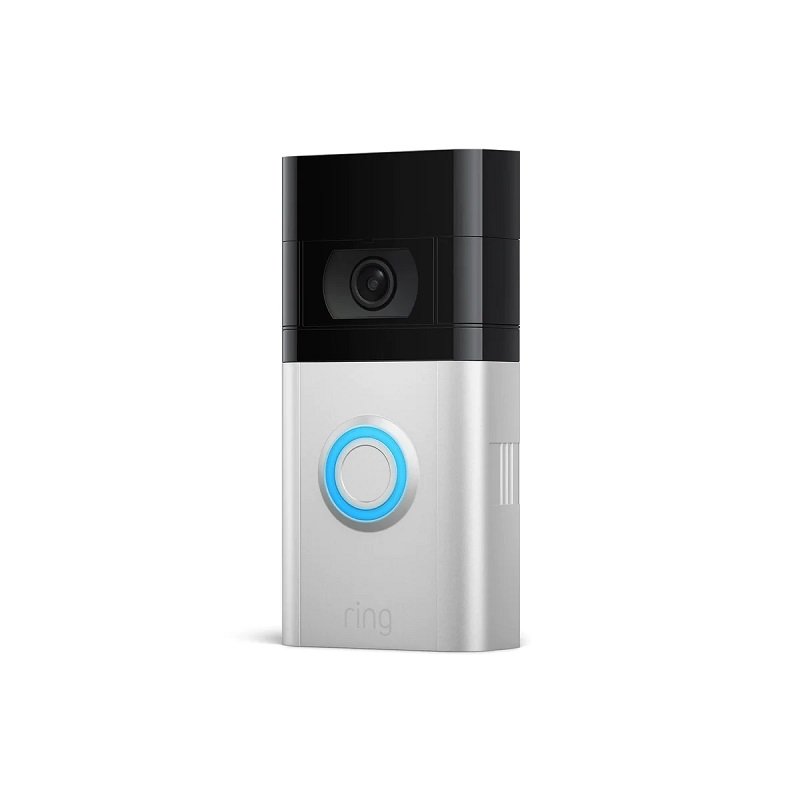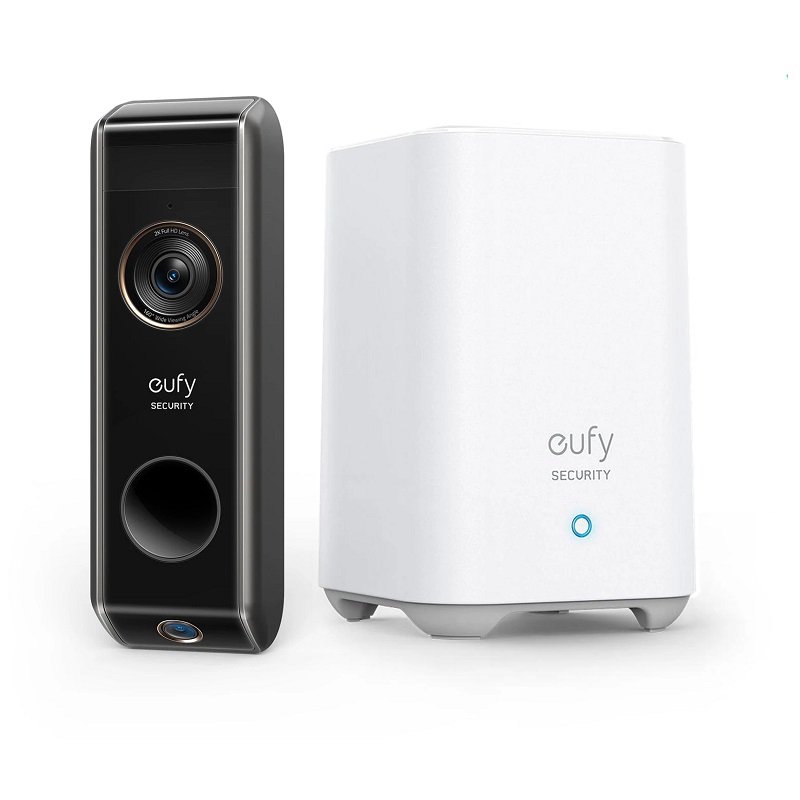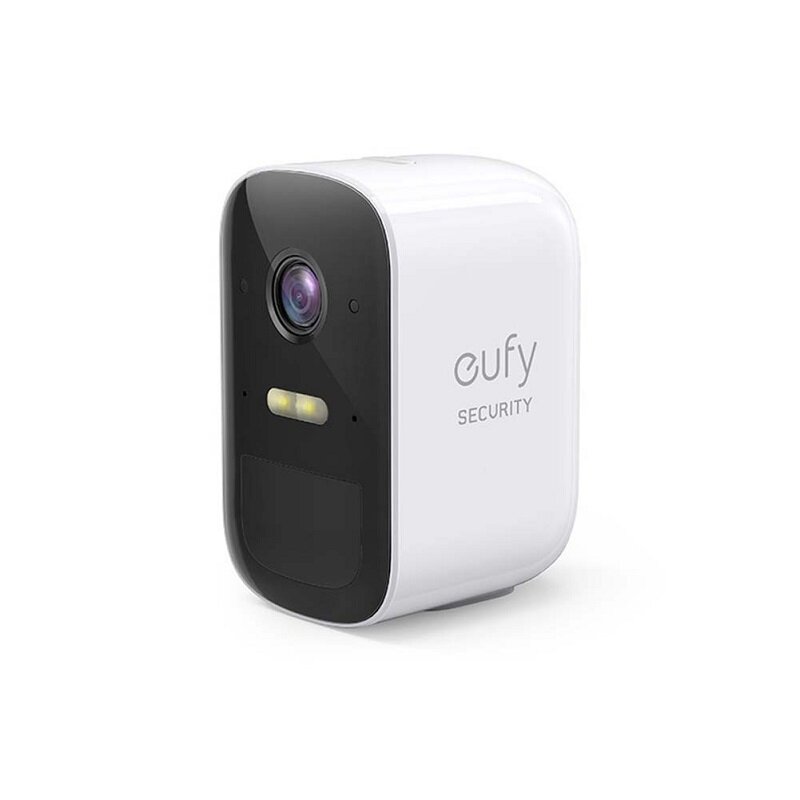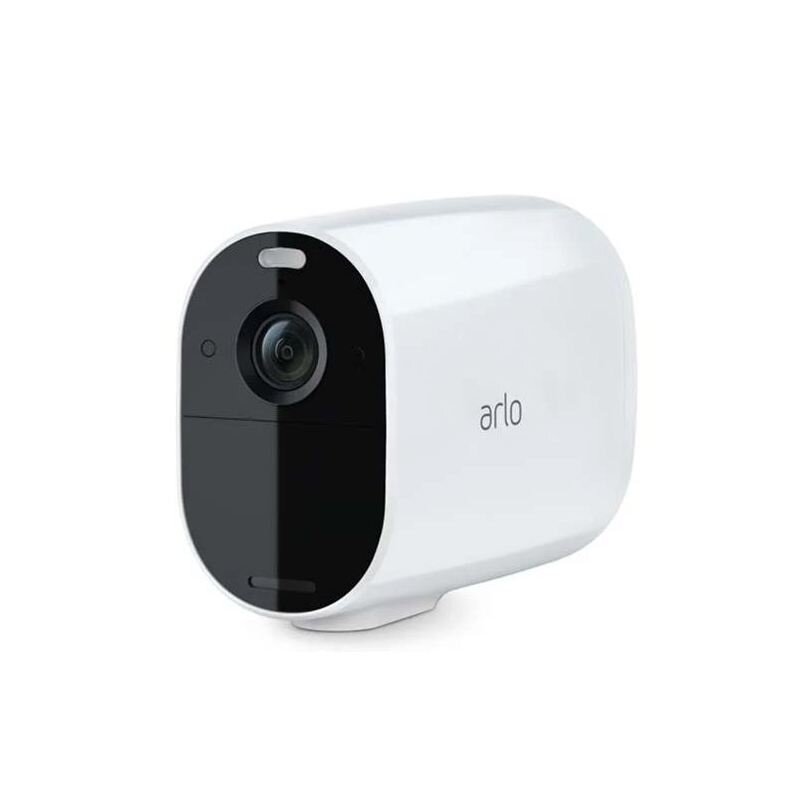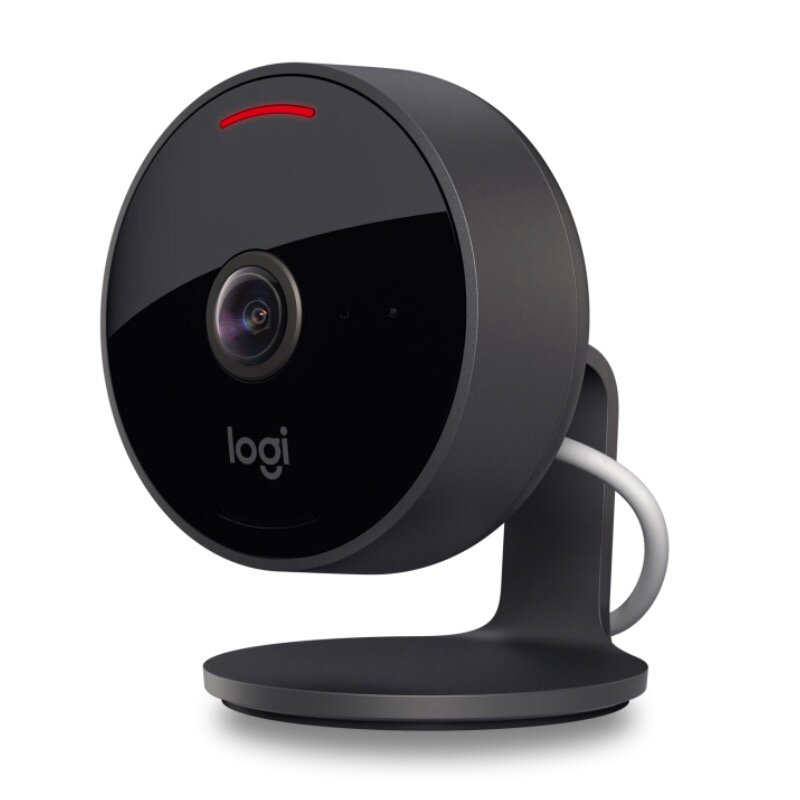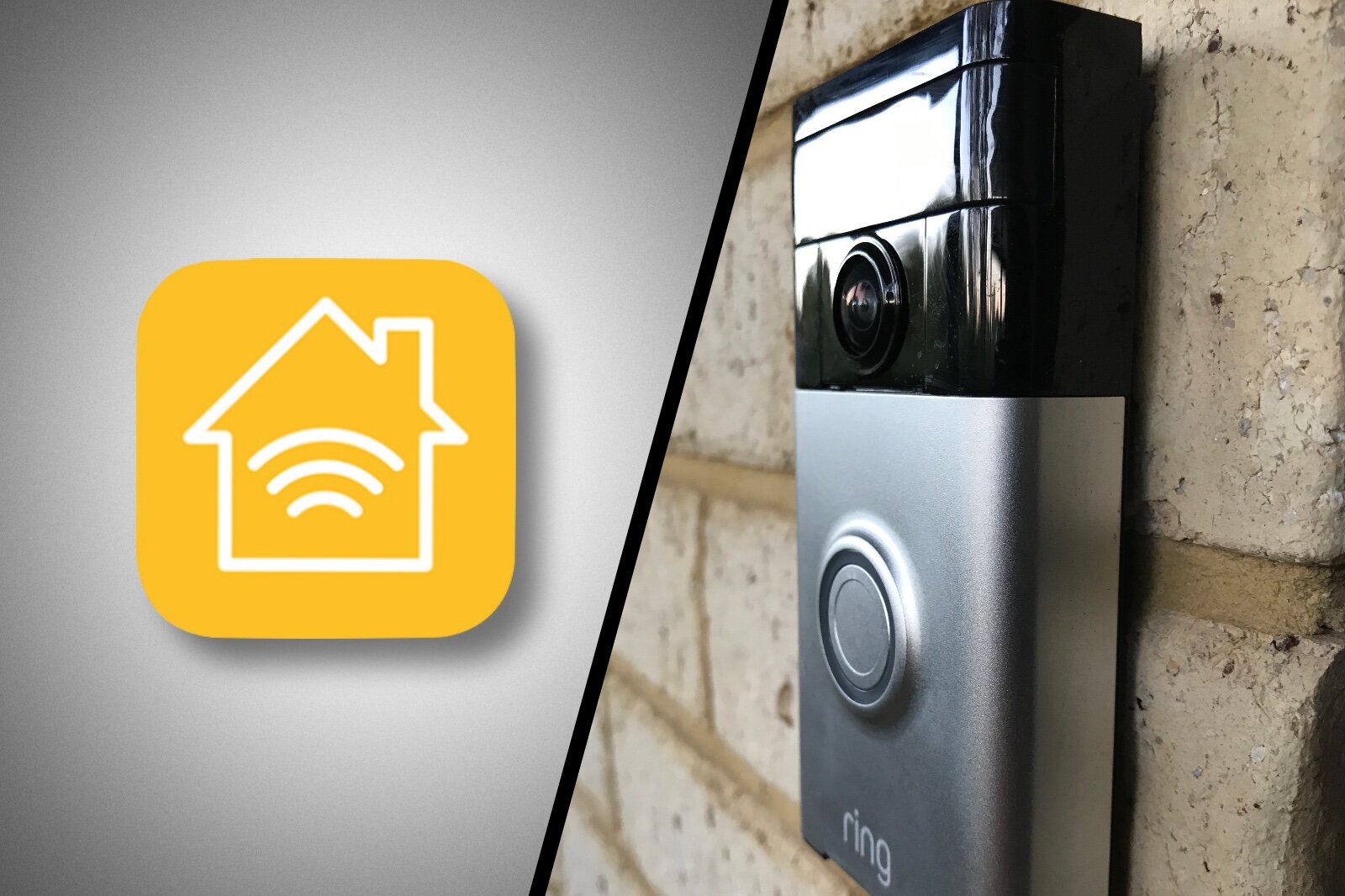Video Doorbell vs Security Camera: What’s The Difference?
The security of our homes is important to us all. After all, feeling safe in your sanctuary is fundamental to mental well being, even if the measures we take are simply precautionary. One of the most effective ways to bring that peace of mind is with video surveillance.
It seems obvious to law abiding folks that the threat of being recorded in the act would be a great deterrent, but is it really a concern for criminals? According to Luke Harris, a security consultant and former burglar, the answer is yes.
“Spotting a security camera is likely to stop a burglar in their tracks, as they not only know that the property is well protected, but also that there is a chance that their face is being recorded and passed on to the police,” Harris noted in an interview with TechRadar in 2021.
“No burglar likes being caught on camera, so breaking into a house and seeing one would be enough to at least make them think twice”
These benefits apply more so in home security environments where target selection is a factor, and doesn't have much impact on more spontaneous incidents. But even in those cases, having video coverage provides a sense of security, or at least closure, because it eliminates the question "what happened?!" and, if criminal activity was a factor, there is evidence to provide legal recourse.
Video doorbells and security cameras provide this surveillance capability to home owners with a wide variety of cost-effective, easy to install devices. With modern devices there are many similarities between the two, but there are also some key differences which make each type better in certain situations.
Main Take Aways
Key Comparison Points
Video quality options and motion detection features.
Power supply, do you need wired power or battery-powered models?
Will you need Wi-Fi or Ethernet connectivity for video streaming?
Do you want to integrate with smart home platforms or security systems?
Are you happy with subscription fees if you get a better experience?
Main differences: Video doorbell vs security camera
Video doorbells are limited in how they can be mounted, security cameras can go anywhere.
Video doorbells can offer better viewing angles for porch situations.
Video doorbells increasingly offer package detection features.
Security cameras can include floodlights and sirens.
Main similarities: Video doorbell vs security camera
Both tend to have similar motion detection features.
Both can have motion zones and human detection.
Both can offer two-way audio for talking to people remotely.
Both can be wired or wireless for power and data.
In This Guide
Video Doorbells
Definition and Functionality
A video doorbell is essentially a security camera with the addition of a doorbell button, and a form factor that is tailored to installation on, or next to, the door frame. While earlier models of video doorbell had lower quality video than standalone security cameras, this is no longer the case. Even the cheapest video doorbell cameras will be high definition, with many now opting for 2K or even 4K video resolutions.
Most video doorbells will feature an aspect ratio that is more suited to watching your porch or door step. Using a square or 3:4 video format provides better vertical viewing area for these locations, and ensures you can see a child or someone crouched in front of the camera, as well as being better able to monitor the ground for packages.
This is often coupled with a very wide angle lens when compared to most security cameras to ensure good visibility to the sides when mounted flat on the wall.
Features and Benefits
1. Two-Way Audio Communication
This is a staple video doorbell feature and is arguably more useful in this context than on a typical security camera. By having this feature on a doorbell you are able to talk to the person at the door from your smartphone wherever you are, and it's more like the intercom that people have come to expect from businesses and apartment blocks.
Being able to talk to someone outside can be a great security benefit as you can see who is there, and quiz them without having to open the door. You can also talk to delivery drivers while you're away from home, and unexpected guests to tell them how far away you are.
2. Motion Detection and Alerts
The ability to detect motion is something both types of video cameras have in common, and it's an important security aspect in either case. These motion events will trigger notifications on your smartphone so you know what's going on outside, whether you are at home or not, and these can be tailored to only trigger in specific areas of the image, and often only if the camera determines that the source of motion is likely to be a person.
Being able to limit the alerts in this way makes them far more useful as you can avoid unimportant events like passing cars, pets, or swaying leaves. Many video doorbells now include package detection capabilities as well, which allows you to be alerted to a delivery specifically so you can keep an eye on it until you get home, or contact someone to collect it for you for safe keeping.
Being alerted to packages and people near your front door in real time has almost become a necessity in the age of online shopping thanks to the related surge in 'porch pirate' activity, and video doorbells are ideally suited to this particular security requirement.
3. Video Recording and Cloud Storage
Video doorbells typically capture video clips when an eligible motion event is detected, or when the doorbell button is pressed. You can also view the video feed live at any time, and some doorbell cameras will record these sessions as well.
Capturing video footage requires somewhere to store it, and this can vary by make and model. Some opt for a cloud-based solution so as to keep the videos safe from tampering. These models will usually require a subscription to pay for the service. Others will store videos locally - either on the doorbell itself, or on a base station somewhere inside the house.
These video clips are generally high quality, and will use some form of night vision to be able to capture video at night as well as during the day.
Color night vision is now growing in popularity as well. This is a higher level of low light sensitivity on the doorbell camera so that it can capture color video with limited exterior lighting, such as moonlit nights or under street lights.
Once the video has been recorded, anyone with access to the doorbell app will be able to browse the history of recorded events and view them at any time. As these clips will be overwritten eventually, depending on the storage method being used, you'll usually have the option to download and save specific videos for posterity.
4. Integration with Smart Home Systems
Being able to see and control all your smart devices through one interface is always a good idea, and makes for a much better smart home experience. Simply being able to present and access your video doorbell in your chosen smart home app is a good start, and a platform like Apple's HomeKit can also record video for you and store it securely for access all in the one app.
Integrating your video doorbell with other smart home devices does have some utility, but it's not generally as great as you might expect. Some platforms will allow you to stream video onto a smart display from a compatible doorbell camera, and you can use the motion sensor as a trigger for activating other smart devices like lights.
Smart displays can also be configured to automatically display video or a snapshot when motion is detected, or the doorbell rings. This is a notable feature of Amazon's Echo Show devices. It can be a convenience, but only if you're right next to the display at the time.
Some video doorbell makers provide shortcuts to things like smart locks to allow for convenient unlocking of the front door if you see someone you want to let in while you're not home, but this is more of a user interface feature than a true integration.
Video Doorbell Installation and Setup
Video doorbells are primarily designed for easy DIY installation, but the complexity can vary depending on how you want to power it, and if you want to use an existing wired chime of some sort.
You can opt for either a wired or wireless video doorbell, sometimes in the one model, but often you need to choose up front. In the vast majority of cases these devices will connect via your Wi-Fi network to provide the data connectivity needed to use the app, record footage, and access the live viewing features.
There are, however, some models that make use of Power over Ethernet (PoE) to provide data and power, but these will typically require professional installation in order to run the required cabling.
Going with a fully wireless model is the easiest option, using an internal battery for power. This is a great option for situations where you don't have existing doorbell wires and can't install any.
These batteries will last you between 2 and 6 months in moderate weather, but if you experience prolonged freezing temperatures, you may find the battery life reduced severely.
A wired installation avoids this issue and is mandatory if you wish to use a wired doorbell chime inside the house. Not all video doorbells support wired chimes, and even those that do may not be compatible with all types of ringers so it's important to review the compatibility and specifications if you want to do this.
In either case the actual installation process is fairly similar:
Place the mounting bracket where you want to install the doorbell and mark it.
You can use adhesive tape to attach the bracket, but most doorbells will includes screws and wall plugs, which is a much more secure option. Mark the hole centers for drilling.
Drill the holes out and install the wall plugs (if needed).
Attach the mounting plate to the wall. Pull through the doorbell wires if using them.
Install the charged battery or connect the doorbell wires, depending on your power choice.
Attach the doorbell to the mount. There will often be a security screw that needs to be tightened to complete the install.
Open the doorbell app for your chosen brand and perform the pairing process as instructed in the quick start guide.
Popular Doorbell Brands and Models
Ring Video Doorbell 4
Ring is a major name in the consumer home security space and, like it or not, still delivers some of the best wireless doorbell performance in the business.
Even with the increase in the number of quality subscription-free doorbell products hitting the market, The Ring Video Doorbell 4 includes some unique features like video pre-roll recording, and an easily removable battery pack that make it a compelling choice.
Combined with their excellent reliability and fast response times, and a best-in-class app experience, I keep coming back to this one.
WUUK Smart Doorbell Pro
Newcomer WUUK made a splash with their first video doorbell and has stepped it up a notch with this second release. The Smart Doorbell Pro offers a 2K camera with subscription-free local recording on the included base station with delivers very fast response times, and crisp video both day and night.
Motion detection is enhanced with radar as well as infrared motion sensors, and they’ve included some interesting extras such as a tamper alarm and voice changer, for those who don’t want to give too much away when talking to strangers.
Eufy Doorbell Dual
Eufy Security has a wide range of cameras and doorbells on offer. The Doorbell Dual being a unique offering in that it has a second HD camera specifically for keeping an eye on your packages.
This works in conjunction with their Package Guard feature which not only notifies you of the package, but if someone tampers with it, and reminds you to have it collected.
Eufy also promises local recording and AI processing of your videos at no extra cost and can integrate with NVRs and major voice assistants.
Security Cameras
Definition and Functionality
Modern security cameras are small, high definition video recording devices that can detect, record and alert you to motion within their field of view. Video can be recorded of just specific events, or potentially 24/7 depending on the power supply and recording system used.
Security cameras offer a more visible and flexible deterrent than video doorbells, simply because of where they can be placed. Several video cameras can be easily installed to cover the perimeter of your property and be positioned to eliminate any blind spots.
Ensuring good coverage, and that each camera cannot be approached without being seen is important from a security perspective. Most security camera manufacturers provide a range of models to assist with this, providing different viewing angles, installation methods, and mounting options.
Unlike video doorbells, indoor security cameras are also available, and can be integrated with other security cameras around your property to provide complete peace of mind, although choosing models with built in privacy controls is important if you don't want to be recorded while at home.
Features and Benefits
1. Wide-Angle Coverage
The wide angle lens used by these video cameras usually provides a narrower field of view than many video doorbells. This is because security cameras tend to be installed in corners rather than on a flat surface, and using a narrower field of view provides more pixels for any given part of the image, yielding better image clarity for things like faces over longer distances.
That said, wide angles of 140 degrees are not unusual, and provide excellent video coverage without the excessive distortion around the edges that wider angles can produce.
When used together two cameras can usually provide complete coverage of the front yard, and cover each other, presenting a highly visible deterrent to would be intruders.
2. Continuous Recording and Playback
Wireless security cameras will only be able to provide event-based video recording due to the limits of running on battery power. This is often preferable in theory as you only have video when something has happened, which can make it much easier to review events.
The ability to detect and respond to motion is not perfect, however, and wireless models can be slow to activate their recording in some cases, potentially missing the early moments, or not recording quick actions at all.
For these reasons some prefer to have a home security system that can record continuously so as not to miss anything. To do this requires wired cameras and usually a local recording system - often a Network Video Recorder (NVR) - to handle the demands of constant video streaming.
3. Night Vision and Weather Resistance
An effective home security camera needs to be reliable and able to capture crisp video footage day or night. This requires better night vision capabilities, and extra weatherproofing when compared with a doorbell.
While many video doorbells have high weather resistance ratings, they still largely benefit from being under some degree of cover. Outdoor security cameras need to be able to handle installation with complete exposure to the elements and function correctly in extreme heat, cold, and wet conditions.
They also need to be able to deliver sharp night vision over longer distances as they need to provide surveillance over a wider area than would be expected of a doorbell camera. That means more powerful infrared lighting, and better low light performance for good results.
4. Advanced Motion Detection and AI Analytics
The motion detection features on security cameras and video doorbells have become largely the same with modern cameras. With the ability to define areas of interest, and distinguish between people, animals and vehicles in many models, allows you to tailor your recording and alert preferences to be most effective for your specific needs.
These features are often ascribed to 'AI' with some brands claiming on-device intelligence to enhance privacy, and others performing the bulk of this processing on their cloud servers for more accurate results. In either case, speed is essential to ensure timely notifications.
Finding out about an event too late, even if that is only a matter of seconds, can compromise your ability to intervene with other included security features like lights, sirens, or even the two-way audio that is largely ubiquitous now.
Security Camera Installation and Setup
When installing security cameras outdoors it's often easier to go with wireless models. Unless you specifically want 24/7 recording, a wireless option avoid the need to run cables and allows for easy DIY installation using your Wi-Fi network.
Running on battery power is less of an issue with security cameras if you go for models that support solar panels. These optional accessories ensure the camera's battery remains topped up and never needs to be recharged manually.
When it comes to wiring and power cables, wired cameras will normally be powered via Power over Ethernet, although some floodlight models require hard wiring to your electrical supply due to their higher power draw. Indoor cameras can also use PoE, but will only require a USB cable if they are using Wi-Fi.
When choosing the locations for your outdoor cameras, it's best to avoid placing them too high. This will negatively impact their motion detection and object identification technology, and also makes it harder to identify individuals. Just above head height is optimal.
You'll also want to choose locations where the cameras will have the least obstruction to their view. More coverage area means less cameras will be needed overall. Ideally multiple security cameras should be placed to cover each other so that no camera can be approached without being seen.
This can be achieved with back-to back arrangements, or a circular regime where each camera points to the next around the house. This is best if you are placing them on outside corners.
These factors are not relevant for indoor cameras as placing one in a corner of each room will usually provide complete coverage.
Installation of wired cameras will take some more effort due to the need to run cables to each location. This is a compelling reason to choose a wireless security camera instead.
To Install a wireless security camera:
Choose a location to install the camera.
Place the mount and mark the drill holes.
Drill the holes and install the provided wall plugs (if required).
Attach the camera to the mount.
Use the camera app to pair with your Wi-Fi network and adjust the positioning.
Mount and attach the solar panel if you have one.
Popular Camera Brands and Models
EufyCam 2C Pro
Eufy Security offers a number of security cameras for different use cases, but the 2C Pro provides a high quality 2K camera, spotlight, and local recording covering most needs.
An optional solar panel is on offer which will keep the battery charged indefinitely, and it uses a dedicated radio link to the base station to ensure longer range than just using your local Wi-Fi network would give.
Human detection, motion zones, and support for Apple’s HomeKit Secure Video technology round out a solid product.
Arlo Essential Spotlight
Arlo is another big name in smart security cameras, and the Arlo Essential range is their entry level product. This one includes a bright spotlight which can be triggered by motion, along with an in-built siren if you so choose.
The HD video is clear and it includes the color night vision feature, a bonus at this price point. Arlo provides video recording in its cloud service and requires a subscription. Various tiers are on offer which allow you to expand from a single camera to a full security system without paying for more than you need.
The Essential cameras provide high performance at a lower price point, flexible installation, and also support an optional solar panel.
Logitech Circle View
Home electronics stalwart Logitech has a number of home security cameras in it’s stable. The Circle View range works exclusively with Apple’s HomeKit as a native device. Used with the HomeKit Secure Video feature it provides secure video storage, people, vehicle, animal, and package detection, facial recognition, and even includes an ambient light sensor for use with HomeKit automations.
A very wide-angle lens makes it suitable for placement against a flat wall, and it manages to utilize this without excessive fisheye distortion. The well-designed, high-quality casing allows it to work inside and outside, making it a versatile choice for Apple fans.
Making The Right Choice
Considerations for Your Home Security Needs
1. Front Door Security
Obviously if watching the front door of your home and it's approaches is the priority, a video doorbell is the way to go. You could achieve similar results with a security camera thanks to the motion detection and two-way audio features, but there's no button, and it's a more unsettling experience for visitors.
It's even better if you combine the two, choosing a doorbell camera that's ideally suited to the porch area and using one or more security cameras to watch the wider approaches. This way, you're not compromising video quality by trying to cover too much area with the doorbell, and you'll get better night vision and motion detection further out from the front door.
2. Surrounding Area Coverage
Beyond the front door, you'll want to consider how much of your property you want to cover for video surveillance. For most people the front and side approaches would be sufficient, but if access to the rear is a concern you'll want to add additi0nal cameras there.
This may be a consideration even if you don't have a direct access to the back yard as intruders can jump the fence from neighboring properties, as I've had happen myself.
For comprehensive coverage you'll really want to have all the exterior access points to the home covered, as well as any out buildings. Thankfully, with the right security system you can easily expand the camera footprint over time as you need, or as costs allow.
Integration with Existing Security Systems
Integration with home security systems is often a matter of using cameras from the same brand. Vendors like to restrict compatibility to their own, or perhaps a few partners products. Smart home security solutions can get around this by allowing a much wider stable of manufacturers.
With these systems you invest in a smart home platform that supports cameras, motion sensors, locks, smoke detectors, and so forth from a variety of brands. You can then mix and match, and leverage automation rules, voice assistants, and other features to automate your response to incidents and keep everything controlled under one app.
This can provide far more options for growth than a stand alone security system, although many home security brands are now expanding their own systems to encompass similar features and become more smart home oriented.
You'll want to look at the full suit of automation features and the breadth of their device compatibility before investing in one.
Budget and Cost Considerations
1. Upfront Costs
The upfront costs for video doorbells and security cameras are similar, at least on a device-by-device basis. Both types are available at a wide variety of price points, performance, and feature sets that are largely comparable.
Hard wired models are usually cheaper due to the lack of a battery, but you then have the cost overhead of cabling if you don't have it already. This can easily outweigh the per unit savings, at least the first time around.
2. Additional Costs and Subscriptions
Some security platforms will command ongoing subscription fees. These are used to provide extra services like emergency response, alarm monitoring, additional smart detection technology, and video storage. These can often be good value, even if you don't like the idea of monthly fees.
That said, it's certainly possible to do without these things with modern smart home systems. Monitored alarms are far less useful now that we can be notified of anything going on at home right on our phones, check the camera feed to see what it is, and respond remotely ourselves.
Being able to mix and match hardware is also much more likely using an open system that doesn't require ongoing subscriptions. Being able to use different camera models means you aren't locked in to one provider, and as the technology evolves over time you'll be able to upgrade or expand as required without much hassle.
User-Friendliness and Accessibility
Consumer cameras of any kind are designed to be easy to install, and easy to use. Installation is fairly consistent between brands as there's not much to it, especially with wireless cameras, but not all brands are good on the usability side.
These smart devices are highly dependent on their apps, and the quality of those apps can make a big difference between being a pleasant experience that works well, and one that is nothing by frustration.
Your best bet is to try these hands on, but if you can't do that, pay special attention to the app design and features when looking at reviews. It's just as important, if not more so, that the hardware itself.
Summary
When looking to add surveillance tech to your home, be it a video doorbell camera, wireless security cameras, or any other security camera systems, you'll need to be aware of placement, motion detection features, video storage method, and integration opportunities with other devices.
Both video doorbells and security cameras offer very similar feature sets these days, with high resolutions, effective night vision, advanced object detection, and good weather resistance. Both wired power and battery powered models are equally good, depending on your needs and the availability of wiring.
When looking to buy into either device type, it's worth considering the wider platform that it's part of and which other systems it can be used with. You're not just buying a camera, but investing in a security system that will need to serve your future needs as well.
Ensuring that system can accommodate other security requirements, like smoke alarms, window sensors, outdoor lighting, and so forth will ensure that the security of your home is well covered from more than just burglars. Starting with a highly visible camera installation, though, will be a great start by immediately giving any intruders pause and likely send them looking for easier targets.


